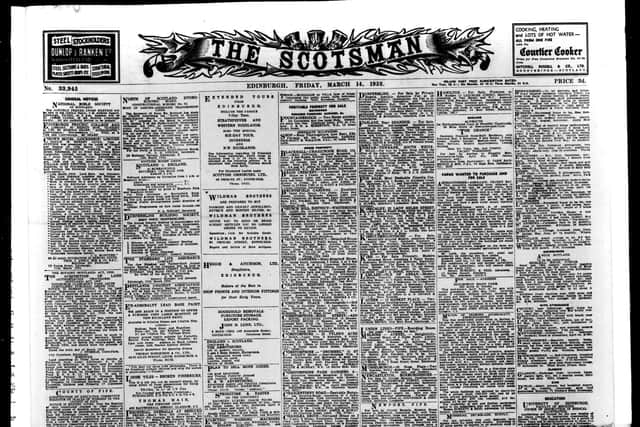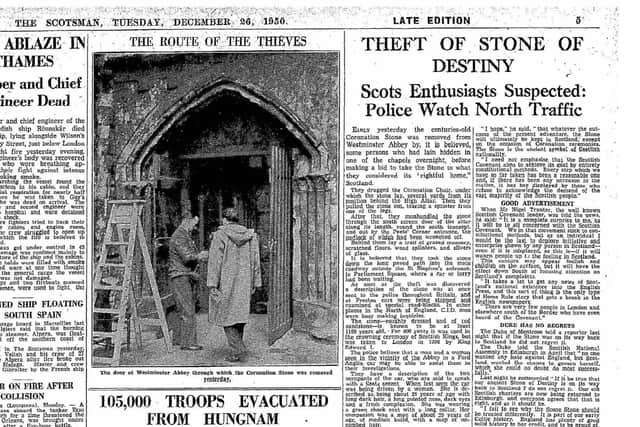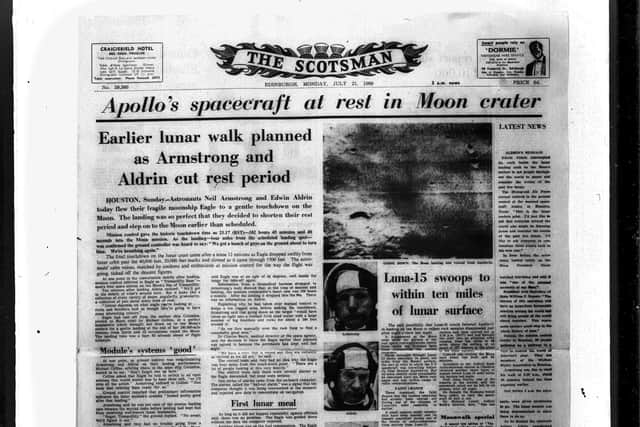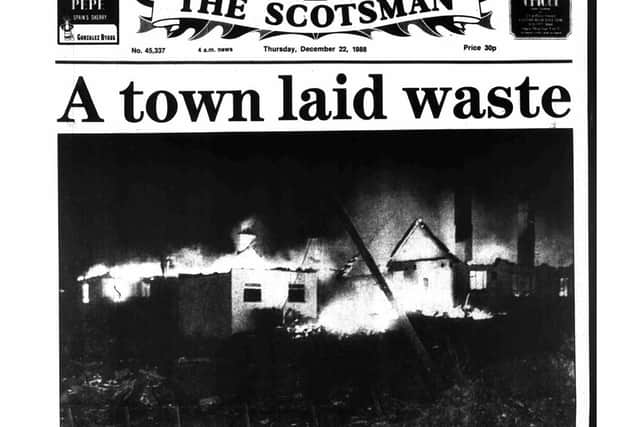Almost half a million pages of The Scotsman opened up for the public in archive update
From the taking of the Stone of Destiny to the long, winding path to devolution and the unimaginable events that make us remember exactly were we were when a certain news story broke, key moments in our life and modern times have been brought to the surface once more as nearly half a million pages of The Scotsman archive open up to the public.
The British Newspaper Archive- an online archive created by Findmypast and the British Library to publish their vast newspaper collection has extended its online collection of back copies of The Scotsman to cover the years 1951 to 2002 in an development which signals a massive digital update. A total of 456,410 new online pages drawn from 16,142 issues have been added.
Advertisement
Hide AdAdvertisement
Hide AdPreviously, the collection spanned 1817 to 1950 with the archive now bringing in coverage of events which have helped to shape the nation in recent decades.


Neil McIntosh, editor of The Scotsman, said: “We're delighted the British Newspaper Archive has extended its Scotsman archive - and what they have achieved is truly remarkable, both in terms of the scale of their work, and the ease of access.
"Reading first-hand coverage of the key events of the second half of the 20th century, from the first steps on the Moon to first steps on the internet, should be fascinating for the general reader. It will be of particular value to students, historians and anyone else keen to understand events that have shaped the modern world.
"There's added value - not to mention a fair bit of nostalgia - in seeing stories of the day presented in the fashion of the day: the design, the photographs, even the broadsheet pages are evocative of the eras on which The Scotsman has reported.
"You are reminded that The Scotsman, its journalists around the world, and its readers, truly have seen it all over the years."


Some of the earliest and most significant pages recently added to The Scotsman online archive include coverage of the taking of The Stone of Destiny from Westminster Abbey on Christmas Day, 1950.
These early accounts included a statement from Wendy Wood, prominent nationalist campaigner and artist, who said of the saga: “That is the best news I have heard in years. It is certainly the best start we could have to the new year.”
The stone's theft rekindled the debate on Scotland's constitutional settlement – a debate in which The Scotsman played a prominent role over the next decades.
Advertisement
Hide AdAdvertisement
Hide AdOn Thursday, March 1, 1979, The Scotsman led its front page with an editorial on the morning of the devolution referendum. With the headline Moment for Decision, the leader urged both a Yes vote and maximum participation from Scots given the amendment to Scotland Act 1978 that devolution had to be approved by 40 % of the total registered electorate, as well as a simple majority.


The leader said: “The 40 % rule makes voting more urgent than usual. Abstention will cost the same as a No vote if the rule deliberately introduced as a barrier against devolution is deliberately introduced. It would be highly satisfactory if the verdict was decisive enough to make it inoperable.”
That day, Scotland voted in favour of devolution by 52% to 48% - but only 32.9% of the electorate had joined the majority.
Look forward some 28 years and the front page of September 12, 1997, tells a different story following the second referendum on devolution, with the headline simply: A nation again.
Following 74 per cent of the electorate voting for devolution, political editor Peter MacMahon wrote: “Home rule is the settled will of the Scottish nation. The unfinished business will be finished.”


The days which collectively tore the hearts of the nation emerge once more in the new additions to The Scotsman online archive with the page dated 14 March 1996 a stark reminder of the morning we all stopped. The sub-header read: “The Dunblane Primary School Tragedy: A town devastated and a nation numbed after the murder of 16 children and their teacher”. The front page is dominated by an image of a female police officer holding a distraught woman in a deep protective embrace against the unthinkable.
The coverage of the Lockerbie bombing also stands out in the archives with the front page capturing the incomprehensible scene of a quiet Dumfries and Galloway town ablaze just days before Christmas 1988 under the headline “A Town Laid Waste".
Inside, reporter Ian Duff wrote from the top of Tundergath Hill above the town where a large part of the wreckage of the Pan-Am Boeing 747 came down.
Advertisement
Hide AdAdvertisement
Hide Ad“High above the market town of Lockerbie I stand in the middle of disaster. The wreckage, blue and white, reflects the light of a moon trying to break through scudding clouds. It is an eerie sight illuminated by car headlights as police and rescuers sift through the debris silhouetted against the skyline of a wild, windy moor.”
The pages are also a reminder of when large reporting teams and bands of photographers were dispatched in haste at the drop of an update on a newswire, often into the dark, the unknown and the horrific. They take us back to when looming deadlines were met following the reporter’s search for a phone with the copy spoken down the receiver to the waiting newsroom, where subs and late newsdesks waited for the words to expertly prepare for delivery to the holding presses, all with true diligence – and an absolute beating pride.